Search
08555 The Effect of Molybdenum on Stainless Steels and Napthenic Acid Corrosion Resistance
Also Purchased
98579 FACTORS CONTROLLING NAPHTHENIC ACID CORROSION
Product Number:
51300-98579-SG
ISBN:
98579 1998 CP
$20.00
51313-02517-Sulfidation and Naphthenic Acid Corrosion of UNS S31603 S31703 and S44400 in Crude Processing
Product Number:
51313-02517-SG
ISBN:
02517 2013 CP
Publication Date:
2013
$20.00
07573 Survey of Materials in Hydrotreater Units Processing High TAN Feeds
Product Number:
51300-07573-SG
ISBN:
07573 2007 CP
Publication Date:
2007
$20.00




